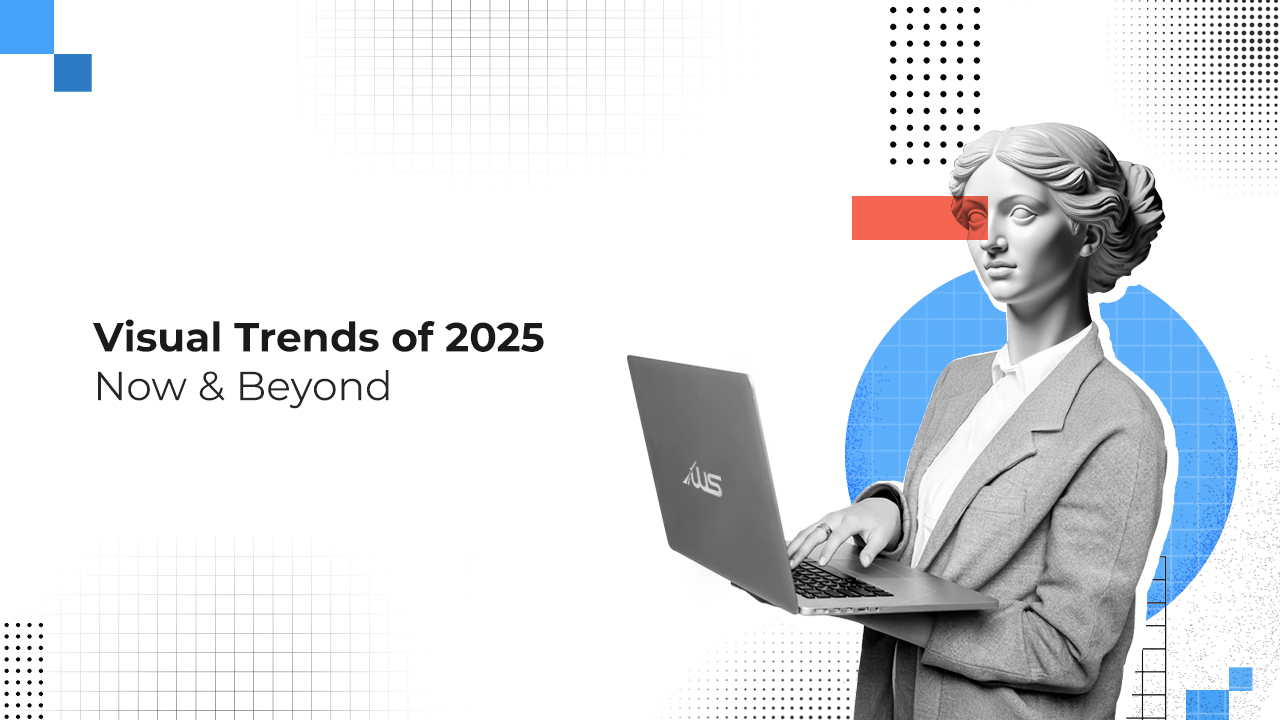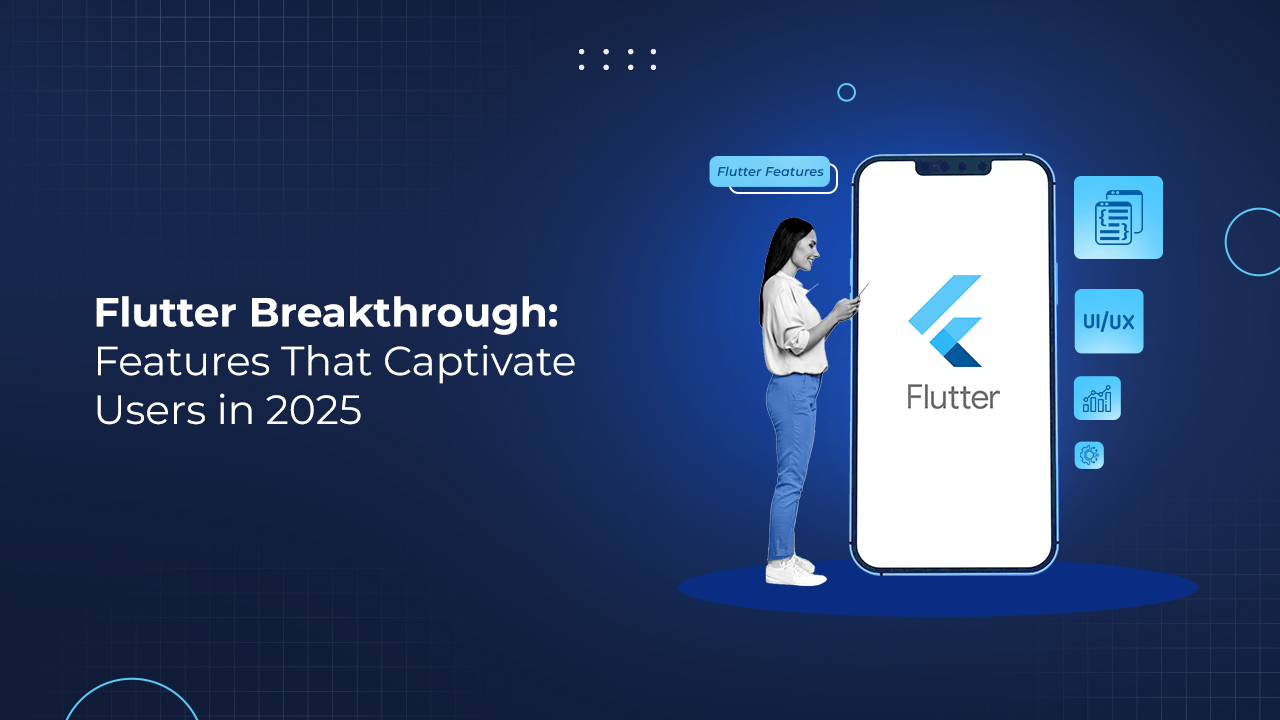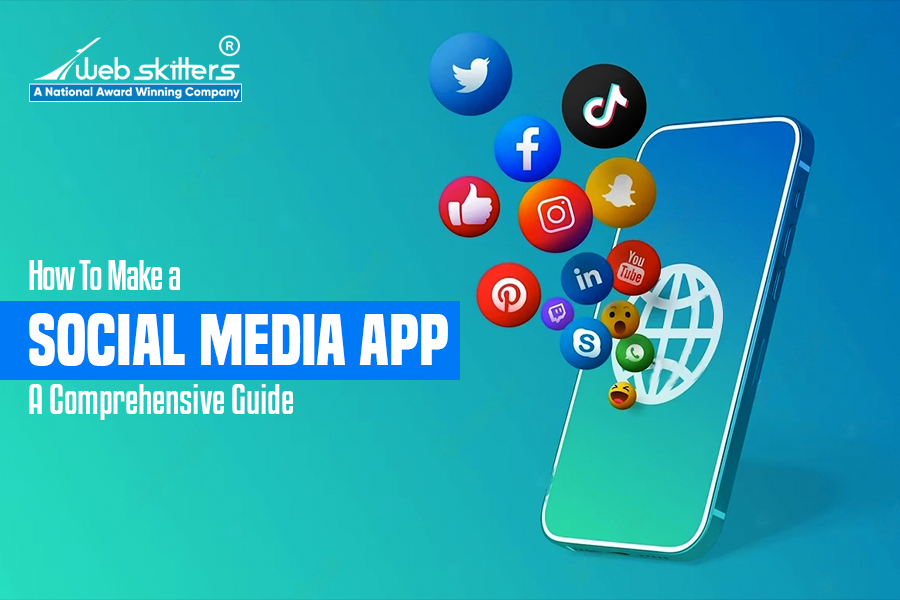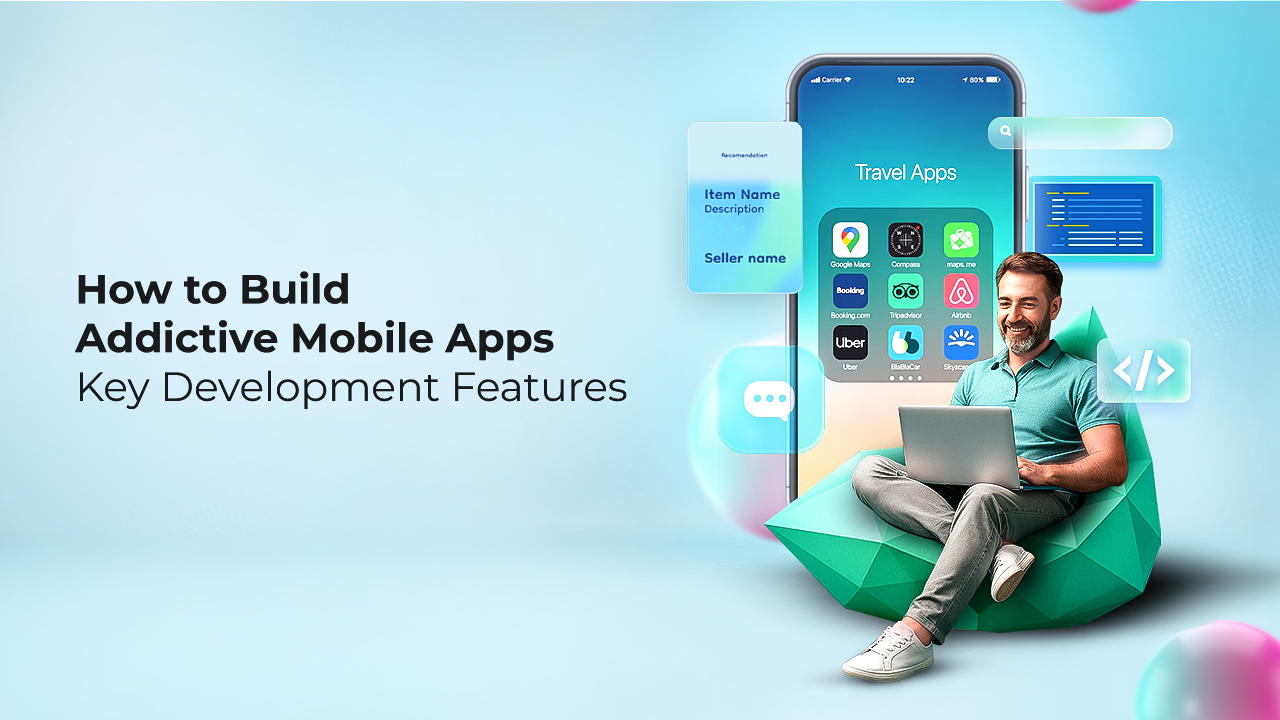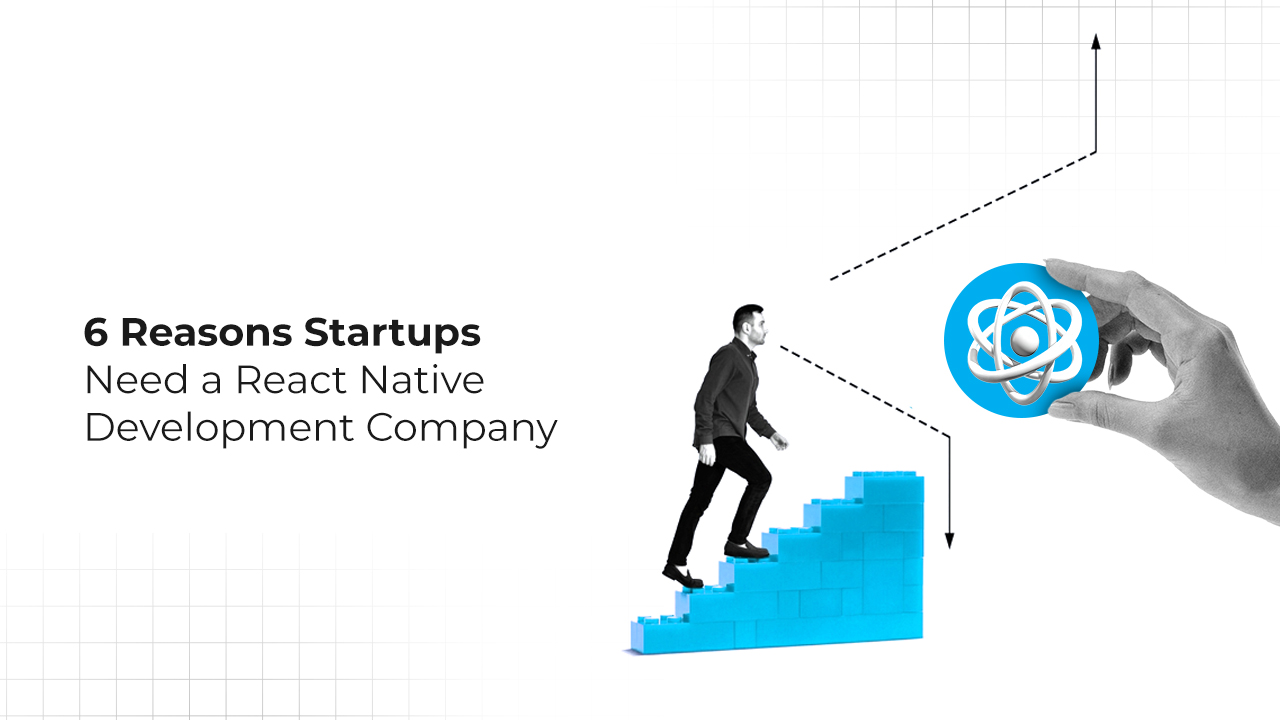![Top 6 Mobile App Development Frameworks In 2023 [Updated] – Webskitters](https://www.webskitters.com/wp-content/uploads/2025/02/63dcd140d369eefef11a0409_Top-mobile-app-development-frameworks-2023.jpg)
Top 6 Mobile App Development Frameworks In 2023
In-depth study, strategy creation, understanding of the target audience, comprehensive planning and analyzing the current market niche and environment are obligatory for all businesses that want to flourish in the digital market.
With the advent of advanced smart technologies every now and then, there is an increased number of mobile users across the globe. It has brought the focus of entrepreneurs to the mobile sector, and they all are now competing with each other to conquer the mobile space through apps.
Businesses can only reach the peak of success when they can provide their audience with successful and feature-rich mobile applications in the modern world. It is easier to capture your audience through a mobile app than any other medium of marketing.
The market paradigm has shifted from desktop to mobile. The sooner your business can accept it, the more beneficial it will be for you!
However, for making a good mark in the industry, you have to reveal to your audience nothing less than the best in-store. You have to go out there and challenge yourself to deliver your audience something amazing and extraordinary. The more features you provide to your audience, the better response you will get from them!
For making a popular app for your business or creating a social media app, you need to select the best mobile app development framework that will help you deliver the best-in-class and impressive mobile app in the market.
It can bring high customer engagement for your business, as the mobile app can be accessed through a variety of devices easily.
What Are Mobile App Development Frameworks?
Mobile app development frameworks are specific software frameworks that help to develop applications for mobile. To put it simply, these are the platforms or the fundamental structures facilitating our work as we build and optimize apps.
These platforms include software, tools, debugging tools, programming interfaces, and compilers, among other things.
As mobile app developers, we could say that working with these specific frameworks reduces programming errors. It is a bliss that assures us to get a flawless and highly functional application as per our client’s demands.
Let’s assume you want to build a gaming app. If you try to do it by yourself by watching tutorials, the procedure will likely take a lot of time. Also, there is a high chance that you will make many mistakes, which will affect the overall quality of the project.
The best way is to hire expert app developers, who will take the responsibility of developing your app using the necessary FRAMEWORKS that you are unaware of.
But what is the best framework for mobile app development?
These are the top frameworks for mobile application development we are talking about that you don’t how to use but, we have the required expertise.
Top Mobile App Development Frameworks in 2023
If you hire dedicated mobile app developers for your project then they will utilize built-in benefits of today’s mobile development frameworks. A selection of the proper framework for your business has an overall stunning impact on the software development lifecycle.
It gives you speed, a bug-free atmosphere and effectiveness during the development process. Having the right framework in place gives you the exclusive benefits including pre-built elements, debugging tools and a toolkit.
Here we have compiled a list of top mobile app development frameworks 2023 that will give you the best possible experience around the market.
1. React Native
React Native is a development framework by Facebook. It is an open-source framework that is used for developing native mobile apps using JavaScript. The development framework stands tall in the market as one of the most extensive mobile app development frameworks.
Businesses across the globe are preferring to use this development framework. It is embedded with JavaScript library code and is easily used for making apps for Android and iOS.
If you are looking for a sophisticated cross-platform application then you can opt to hire dedicated react native developers to get your mobile application developed with flexibility.
Its quicker development and implementation feature make it more appealing for the developers to work on it. React Native helps businesses successfully bridge the gap between the programmer’s efforts and native app performance.
If you are looking for quick development and implementation of your mobile app, then React Native is the right platform for you.
Key Features of React Native
The core features of React Native architecture framework are as follows:
- React native app development is an open-source mobile application development framework.
- It’s focused on UI design and is highly responsive.
- React Native community is one of the strongest communities in the world of mobile app development.
- It’s one of the most trusted app development frameworks built by an IT giant like Facebook.
- The development time is quite short and supports third-party libraries.
- It delivers exceptional performance as well as supports third-party libraries.
- Some other additional features are: low-code, live reload, and reusable components.
Why Use React Native?
- React Native reduces the effort of developers in writing separate codes for Android and iOS platforms from scratch. It also makes the process of maintaining and scaling apps easy.
- Being a cross-platform framework, React Native helps to build a stunning app for both iOS and Android platforms and adds a native-like experience to them.
- The developers don’t need any particular language expertise if they are familiar with Java then it is sufficient enough to build the app.
- Offers open-source libraries of pre-built components for accelerating the development process.
- It is a community-driven framework with wide online support available.
- The React Native creators are continuously working on improving the framework, thus making it one of the most competent and advanced frameworks in the market.
When To Use It?
You should use React Native whenever you need:
- Developing a cross-platform application that gives look and feels native app-like experience.
- Building faster and quicker apps within their budget.
- Transforming your web page into an intuitive mobile application.
Popular Apps on The Framework
Some famous applications are built on this framework some of them are:
- Airbnb
- Amazon Prime
- Tesla
- UberEats
2. Flutter
Flutter is a beautiful, natively compiled application for desktop, web and mobile applications. It is an open-source mobile app SDK that was developed by Google. It is the second-most popular cross-platform mobile app development framework. The developers can use the development of mobile applications for native devices as well as cross-platform.
The framework is compatible with the programming language Dart. It is a single codebase that contains widgets, debugging, rendering engines and other APIs that help in creating and deploying scalable and exclusive cross-platform mobile applications.
Create a responsive mobile application through this framework. It enables the developers to modify any existing applications and create a new one in no time. The framework also consists of a 2D graphics engine called Skia, which helps in creating a native app-like feel for the users.
Key Features of Flutter
The core features of the Flutter framework are as follows:
- Flutter framework functions quicker in comparison to its alternatives and ensures an increased Time-To-Market speed.
- Flutter application development is mostly indistinguishable from Native App Performance.
- Flutter is capable of customizing anything complex you see on the screen.
- With Flutter’s rendering engine, you can do a lot of stuff with your applications unavailable on other platforms.
- It’s a simple platform with strong widget support, rich motion APIs, and built-in material designs.
- It supports app development on both iOS ad Android platforms.
Why Use Flutter?
- Powered by Google, Flutter helps in smoothly and quickly developing the app.
- Offers incredibly tailor-made widgets for fast UI development and coding.
- It has a hot reload feature that enhances the developer’s activity and performance.
- It is portable and platform-agnostic.
- A single codebase is used for designing applications for Android, iOS, Linux, Mac, Windows and the web.
When To Use It?
Flutter should be your choice when:
- You have a tight budget to follow.
- You need customized widgets.
- Need to deliver a native app-like experience
- Accelerate your development process.
Popular Apps on The Framework
Some of the popular global businesses that are using Flutter include:
- Google Ads
- Alibaba
- Cryptograph
- Reflectly
3. Kotlin
Kotlin is defined as a feature-rich and one of the most popular frameworks. It is a flawless Java interoperability that used existing frameworks for developing excellent backend development. The Kotlin libraries are a great framework for server-side app development. It is known for high readability and requires no runtime overhead.
Kotlin being a server-side application development is a productive way. It is a clean language design that enables the developers to write less code with fewer bugs that take care of all aspects of app development. you can hire kotlin developers who can understand your development needs and provide the best possible solutions without compromising the quality.
Key Features of Kotlin
The core features of the Kotlin App Development framework are as follows:
- Kotlin is an open-source programming language that provides a single-click tool to convert existing Java Code.
- One of the best features of the Kotlin framework is its interoperability with Java.
- The lazy-loading feature allows us to load only resources into the main memory.
- It has no runtime overhead, reducing the question of lower performance arises with Kotlin.
- It has a massive community. So, whenever we get stuck, we have got other development professionals by our side.
- Kotlin framework organizes asynchronous programming simply, and efficiently.
- It can run on any platform where Java runs. Hence, you can use it to develop cross-platform apps.
- The flexibility of Kotlin is truly unmatchable.
- Some other features include flexibility, high-order functions, and standard functions.
Why Use Kotlin?
Using Kotlin provides you with a lot of benefits, some of which are:
- Great IDE and tooling support
- Developers need to write less code
- Kotlin has no runtime overhead
- It has a large community
- Kotlin can run on multiple platforms
When To Use It?
Kotlin is used for:
- Back end development
- Full-stack web development
- Multi-platform mobile development
- Cost-effective solutions
Popular Apps on The Framework
- Uber
- Tinder
- Coursera
4. Swift
Swift is an intuitive programming language that is used for the development of software for iOS, iPadOS, macOS, tvOS, and watchOS. The code used in Swift development is safe and helps in developing software which runs at lightning-fast speed. It is a result of the latest and updated research, combined with decades of experience in building any kind of platform for Apple.
It has a built-in keyword feature that defines the asynchronous behavior, responsible for making your code reasonable and less prone to error. If you are looking to develop software using Swift, you can easily hire Swift developers who have the expertise to provide you with the best quality software that meets your needs and requirements.
Key Features of Swift
The core features of Swift programming language are as follows:
- Swift has powerful generics that allow you to write reusable, flexible functions.
- Swift provides enough support for catching, throwing, propagating, and manipulating runtime errors.
- With Swift programming language, we can define a class or structure in a single file easily.
- The Swift package manager is an efficient cross-platform tool that we can use to build and deploy applications.
- Swift programming language uses an LLDB debugger that provides you with a debugger and a REPL to enable integrated debugging.
- It prevents risky things from happening by automatically managing memory.
- The most recent version of Swift has sound binary compatibility for the applications.
- Some other relevant features are powerful generics and flexible enumerations.
Why Use Swift?
- Swift is fast and enables a high level of interactivity during development.
- The code resembles plain English, enabling the developers to spend far less time.
- It allows developers to create app logic and improve the code quality.
- Swift works better and faster during bug testing.
- Supporting dynamic libraries helps in cutting down the initial size of the app.
When To Use It?
- You must use Swift when:
- You want to develop software for iOS.
- An expressive language is used for simplified syntax and grammar.
- Easy-to-scale software is required.
Popular Apps on The Framework
- Accenture
- Airbnb
- Truecaller
- Khan Academy
5. Java
Java is an all-purpose programming language. We use it widely to develop programs for a variety of purposes, including websites, computer games, mobile applications, and comprehensive programs for businesses and academic research. It’s created based on the WORA principle – “Write once, Run anywhere.”
This refers to the fact that an application built in Java could be run on any platform.
The most frequently used and well-known object-oriented programming language is Java. Java’s popularity and widespread use are largely due to its security-related advantages. So many app development professionals utilize it for various purposes.
We create a wide range of applications, including network applications, business applications, online applications, smartphone games, Android apps, and many more using Java.
Key Features
The core features of Java App Development frameworks are as follows:
- Java is the best mobile development platform for its security because it has no explicit pointer.
- It’s platform-independent since it’s different from languages like C++, C, and others.
- Java is pretty much simple to learn, and the syntaxes are clean, simple, and easy to understand.
- It’s an object-oriented mobile app development language.
- It’s a robust mobile application language that uses strong memory management.
- Java is portable as it helps you to carry Java Bytecodes to any platform without implementation.
- Java framework is swifter than many other conventional programming languages.
Why Use Java?
Java is used so widely because of these reasons:
- It’s quite easy to write, compile, learn, and debug.
- It’s platform-independent.
- Java is object-oriented.
- Its security features are highly-popular.
- It adds immense scalability and capacity to our systems.
- Java has its mechanism of memory management.
When To Use It?
Java is used during the following scenarios:
- Building and running mobile apps.
- Building and scaling cloud applications.
- Develop marketing tools like chatbots.
- Supporting enterprise-level web applications.
- Supporting Internet of Things (IoT) and Artificial Intelligence (AI) devices.
Some Popular Apps built in Java
Some popular apps built in Java are as follows:
- Spotify
- Opera Mini
- Nimbuzz Messenger
- Netbeans
- Amazon
6. Objective-C
Objective-C is a high-level programming language with a strong emphasis on objects. It is secure for many forms of data and is essentially a superset of C as well. Its major objective is to support the creation of programs for platforms like iOS and OS X. Objective-C is one of our preferred mobile app development frameworks when it comes to building apps for Apple platforms.
Since purchasing NeXT in the late 1990s, Apple has been adopting Objective-C. Its main principle is “optimization for the reader, not the writer.” By using Objective-C, you may manage your object graph and use object literals at the language level.
At present, it’s one of the most sought-after programming languages and the most in-demand mobile application development frameworks in the world for building iOS apps.
Key Features
The core features of the Objective-C App Development framework are as follows:
- With Objective-C language, it’s easier to automate and manage.
- It’s superb for memory management.
- It provides wonderful and consistent support for binary frameworks.
- There are so many third-party libraries that facilitate mobile app development.
- It’s a well-tested app development programming language.
Why Use Objective-C?
Objective-C is used so widely because of these reasons:
- It’s the primary framework for creating iOS apps over several years.
- It has high familiarity among developers, which lowers the development time and increases accuracy.
- There are already so many 3rd party libraries written in Objective-C.
- In some cases, it gives faster performance than Swift.
- It utilizes dynamic and static typing features.
- Apps made with Objective-C are highly secure.
When To Use It?
Objective C is used during the following scenarios:
- Your developers are well-versed in it.
- Your team has to access private APIs.
- If your programmers don’t have much expertise in overloading and multiple inheritances.
Some Popular Apps built in Objective-C
Here are popular apps built in Objective-C:
- Slack
- Snapchat
- Glovo
- Uber
- Tokopedia
The Types of Mobile App Frameworks
When we aim to build an app for a business, the first question we have to face is: Which Type of Mobile App Do We Need to Build? To be specific, we decide which mobile app framework is based on our clients’ requirements.
First, we take a look at the project brief they share with us. After going through that in detail, we research extensively and then identify the framework to be used.
There are three most prominent types of mobile operating systems (OS) available: iOS, Android, and Windows. Plus, there are three different types of mobile apps based on digital devices – Mobile only Apps, Web-only apps, and apps that work on both mobile and the web.
Taking into account these criteria, there are specific mobile app development frameworks we use to fulfill our client’s requirements.
Below are detailed the three broad mobile app development frameworks we use frequently to build the best apps. Check these out:
1. Native Apps
A native application is a type of mobile app framework we use to build apps for a particular device or platform. Since this is OS-centric, these apps have the capability of using device-only hardware and software.
Native apps can readily provide enhanced performance by taking the advantage of the latest technologies. Some prominent examples of native applications are Mail, Contacts, or Photos. These are generally preinstalled or configured on every mobile phone.
We write native apps using the code use of the device and its operating system. For example, iOS applications are written in Swift or Objective-C, while Android-native apps are written in Java.
These apps work with the OS in a way that enables them to perform more flexibly and faster than the alternative applications. If users of different types of devices use this app, we can create app versions for every device.
Technologies Used
Some programming languages used to develop native apps are Java, Kotlin, Swift, Python, React, C++, and Objective-C.
Pros of Native Apps
Due to its single focus, a native mobile app has advantages such as more swiftness and higher reliability. When it comes to performance, they are extremely efficient with the existing device’s resources than installed mobile applications.
These programs use the native device user interface (UI) thereby giving an excellent customer experience. In addition, as they can connect directly with the device’s hardware, they have access to a range of features such as Bluetooth, NFC, Camera Roll, and more.
Cons Of Native Apps
The main issue we face with a native mobile app is that whenever we start developing them, we have to double the efforts for each platform. This means we can’t use the code we created for one platform on the other.
Also, this increases the costs and takes a lot of our efforts to maintain and update the individual codebase for every version. Moreover, every time there is a new app update released, the users have to download the new file to reinstall it.
2. Web Apps
A web application is an application program stored on a remote server and delivered through a browser interface over the internet. When accessed in a mobile device or a browser, web applications behave, and look almost like mobile apps. These are not some standalone apps that you need to download and install into your device.
They are rather highly-responsive websites adapting their UI to the device the user is on. Specifically, when you install a web app, it bookmarks the website URL on your device.
Our kind of web application is the Progressive Web Application (PWA), which is a native app operating inside a browser. Popular examples of web apps are- Google Docs, Basecamp, Microsoft Office, etc.
Technologies Used:
The top programming languages we use to design web apps are HTML5, CSS, Ruby, JavaScript, and others.
Pros of Web Apps
As these apps are web-based, there is no requirement to customize them to a specific operating system or platform. It’s a positive aspect since it lowers development costs. Moreover, you don’t need to download anything, which is another great merit.
So, web apps don’t occupy chunks of space in your device memory like a native app. This is why maintenance is quite easier. All you need to do is push the live update over the web.
Cons Of Web Apps
These applications completely depend on the browser on the browser a device uses. The functionalities vary from one browser to another giving variable user experiences. Also, unlike native apps, they don’t work completely offline because they are the shells for websites.
Sometimes we can incorporate offline modes, but still, the device needs an internet connection to store the data on your device, show new updates, or refresh the screen.
Web apps operate at a slower speed than the ones hosted on a local server. Sometimes there can be security issues, although rare, which make these apps a threat to confidential data.
3. Hybrid Apps
Hybrid apps are web apps that feel and look like native apps. While they are equipped with responsive design, fast performance, and home screen app icons, these are the web apps that we make to look native.
Once the users download and install this application locally, the shell connects to the capabilities of the mobile platform through an embedded browser in the app.
The native app container allows leveraging some native features and device hardware like a camera, push notifications, calendar, etc. Some examples of hybrid apps are Gmail, Instagram, Twitter, etc.
Technologies Used
To build hybrid apps we use a combination of different web technologies, as well as native APIs. It includes Objective-C, HTML5, Ionic, Swift, and others.
Pros of Hybrid Apps
We prefer building a hybrid app because it takes much lesser time than a native app; so we can deliver a quality solution to the client quickly. The biggest advantage of hybrid applications is their cross-platform compatibility, which allows us to use a common codebase across both, iOS and Android devices.
Because of the cloud-native web technologies and single codebase, we find it easier to build scalability into the apps. In addition, it’s a cost-effective option than native apps as there is less code to maintain.
Cons Of Hybrid Apps
When it comes to hybrid apps, there is a layer between the source code and the operating system which affects the performance. Also, we often face test complexity as there are many codes that hybrid apps share between platforms that are native to enjoy the benefits of the hardware.
Whether native or hybrid, it’s always our responsibility to ensure the application interface delivers a compatible UX. There are a lot of flexibilities hybrid app provides, and it’s easy to mess up. Often these programs face inconsistent UX because of weak internet connections.
What Is A No-Code App Builder?
A no-code app builder is a straightforward tool or platform designed that enables us to build faster web and mobile applications. It’s much easier than the conventional app development methods because a no-code app builder even allows non-technical users.
Over several years, the app development process has evolved dramatically opening the door for non-tech developers to take part in the app development stages.
With this evolution of no-code and low-code platforms, the features and capabilities of these tools have expanded significantly. What was restricted to early-stage minimum viable products, has now transformed into fully scalable mobile apps.
We simply drag and drop the pre-coded elements exactly the way we want using these frameworks’ declarative interface. It’s highly advantageous because we can build apps in no time.
Let us share a great example to make you understand how cool a no-code app builder is!
Often the app development teams face excessive time crunch when the project deadline comes near. The team doesn’t have enough time to research and develop codes which is when they turn to no-code app development.
Take the look at the upsides of using no-code app builders we found while using them:
1. Faster Innovation
We can easily hit the growth targets, and finish urgent projects by giving any teammate the responsibility to build apps. This is how our team gets the work done smoothly under pressurized situations.
2. Stronger Collaboration
No-code app builders bring together the disjointed technical and non-technical departments by laying the foundation of common goals. Instead of working in silos, we work together and promote better communication.
3. Reduced Cost
Traditional application programming frameworks are indeed expensive. Especially, when we build fully-customized complex apps, it takes several thousand bucks. With no-code development frameworks, we can reduce the cost remarkably.
4. Growing Capabilities
usinesses in every sector are attempting to stay agile and develop apps quickly – we are also not an exception in this regard. No code app builders are super-fast to implement as they are growing in capabilities and resources every day.
5. Increased ROI
t’s tried and tested. When our teammates are given no-code app tools they stretch their contribution collaboratively in less time. This doubles the overall productivity, and we get to see meaningful results in terms of growth.
Some Popular No-Code App Builders
Who says only people from core-technical backgrounds can build apps when there is a plethora of No-Code App Builders ready at your service?
Choosing the best no-code app builders for an app development project is a daunting task. At least, we think so because we have gone through this phase. It feels overwhelming to see there are so many options available but not be able to decide which one to use.
The fundamental objective of using no-code app development platforms is to increase app development speed. Also, because time is money – in several ways – these awesome frameworks make the entire procedure less expensive.
So, here is a list of some best No-code app builder frameworks our team love to use and wants you to take advantage of as well!
1. Glide
The first no-code app builder we kept at the top of our list is Glide. Believe us or not, if you have a team where the majority of the members are beginners, Glide is the ideal tool that can get the work done pretty, easily.
Want to get feedback from existing users? We are here! Yes, we use it to ideate, design, and launch both, mobile apps, and web apps in just a few days – can you imagine?
Glide truly lets anyone on the team create robust custom tools to move a business forward. One way to begin your Glide journey is from a spreadsheet you are already using. Upload any Spreadsheet doc or Google Sheet containing all the necessary information, and Glide will take care of the rest.
This platform will use its automation features to generate a functional app. The smoothness it gives during creating an application is undeniable as well as, unmatchable.
Frontend Capability Of Glide
Glide is packed with some powerful and integrating features and amazing templates for things like conference schedule, task tracking, etc. There is separate template inventory for landing pages, property manager dashboards and others.
Backend Capability Of Glide
Glide offers an unforgettable experience to the users. It allows us to access the dashboard and switch any field, feature and settings via the drag-and-drop capabilities.
2. Bravo Studio
Bravo Studio is the design-first no-code app development platform and one of our favorites as well. It’s possible to create app designs with Adobe XD or Figma and import the result effortlessly into Bravo Studio. We then connect the app to a database or backend via REST API to build a fully-functional app in no time.
Our team is focused on producing top-notch mobile applications in much less time with Bravo Studio. They are publishable and can be submitted to the Google Play Store or Apple App Store easily. Develop first, iterate fast, and adapt forever even if you don’t have sound coding knowledge with Bravo Studio.
Frontend Capability Of Bravo Studio
It’s extremely design-oriented. Build apps in Adobe XD or Figma and import them into Bravo Studio.
Backend Capability Of Bravo Studio
Bravo Studio helps to connect the app to a database or backend via REST API. The ultimate result is a fully-functional, high-performing app.
3. Adalo
The third one on our list is Adalo. It’s a frontend-oriented no-code app builder that allows us to develop top-class apps. Wondering how much flexibility is there in terms of publishing? Guess what?
We can publish them anywhere – mobile, app stores, and the web. There are also drag-and-drop components with which we can construct our idea. There are “Actions” representing on-page logic that can be used to set off backend events.
The most unique thing we found about Adalo is that it uses a spreadsheet-style database where we store, update, and retrieve data.
However, it doesn’t allow Backend logic per se but can merge with other APIs and tools that provide flexible background functionalities. Overall, for new developers who are still in the training phase, Adalo is a great tool.
Frontend Capability of Adalo
The frontend capabilities of Adalo are: triggering push notifications, drag-and-drop components, and actions to link pages together.
Backend Capability of Adalo
The backend features of Adalo are API integration capabilities, Spreadsheet-style database.
4. Bubble
The bubble is the most omnipresent no-code platform with a community base and our favorite one too. It’s a frontend-oriented builder using which we develop responsive web applications capable of both, web and mobile. Owing to its massive community, there is a myriad of user-generated templates plus captivating components we often use while creating the apps.
Bubble uses workflow concepts to design simply great logic. These workflows facilitate interaction with the pages within the app and the Bubble database. What’s the cherry on the top here? We often use external APIs with these workflows to enjoy some add-on functionalities Bubble itself doesn’t offer. There is something unique we noticed about Bubble, which sets it apart from other app development tools.
It uses common terminologies instead of technical jargon and professional terms, which makes it extremely useful for non-technical app makers.
Frontend Capability Of Bubble
Bubble is loaded with frontend capabilities like customizable UX/UI, drag-and-drop design, integration capabilities, a large collection of engaging templates, and dynamic content among others.
Backend Capability Of Bubble
Some of the value-generating backend capabilities of Bubble include, Server hosting, multi-factor authentication, version control and backups, automatic SSL certificates, etc.
How Do I Choose The Best Mobile App Development Framework?
Making the appropriate framework choice is an important step in creating a mobile application. It’s because these platforms make the task easier, reduce development time, and lower costs.
Plus, there are so many customization options that make an app great. But with the abundance of frameworks available, the task may be fairly difficult.
There are arsenals of factors that influence our decision during selecting the right mobile app development framework. These factors should be embedded with a range of industry standards to maintain credibility and effectiveness.
We have jotted down these 5 factors, which we consider during selecting the right mobile app development frameworks.
1. Platform Feature Support
Plenty of applications in today’s age of mobile apps are cross-platform in nature. This means that they can work on multiple platforms without the need to recoding for individual native systems.
We follow the same app development approach as it helps us to spend less time coding for particular platforms while using cross-platform frameworks. This is highly value-generating and beneficial to choose the right framework.
2. Speed
Mobile applications, both native and cross-platform, must operate as quickly and effectively as web pages. This is necessary for practically all apps, but it’s especially important for gaming apps because they need a particular level of performance and speed to function.
For many projects, mobile app development frameworks that may assist developers in using the best code and libraries for maximum performance are crucial.
3. Development Cost
During planning for the development of a new business app, taking into account the Return on Investment vs. development cost is a MUST. This helps both, the client and the development team to set expectations about how much profit they are going to obtain from the app.
Whenever we get a new project, we first discuss these crucial things with our clients and then decide what and how many resources are required.
4. Security
In an era of rising data breaches, mobile apps that uses Wi-Fi security, software security, and cellular network security features are more targeted. This is especially true for eCommerce apps having payment gateways or systems.
Picking secure and safe mobile app development frameworks so that the users’ and company’s data stays safe is the key driving factor. While building these apps we harden them, secure them, and conduct risk evaluations, vulnerability testing, and penetration testing.
5. Efficiency and After Launch Updates
Working within the parameters of a system’s thin code pattern may assist developers to create the most efficient mobile applications. We choose a mobile application framework that boosts our experiences and guarantees the delivery of high-quality final output.
Selecting the best framework, ensures to provide you with efficient services and perfect after-launch updates that would benefit and speed up your app’s performance.
The Key Benefits Of A Mobile App Framework
Mobile apps are at present dominating the market. All thanks to the best framework for mobile apps, customization features, and user interactions, which have made the procedure hassle-free.
Whatever apps we make or use are predominantly based on these six main frameworks – React Native, Flutter, Kotlin, Swift, Java, and Objective-C. There are many other popular mobile app development frameworks, but these are currently ruling the sector.
If you ask us about the key benefits of these frameworks the first and foremost point that comes to our mind is time effectiveness. But there are more advantageous things about these tools, which need to be mentioned.
These are the most authentic ones as we have identified the benefits while working with the tools. Check these out:
1. Faster App Development
he best frameworks for app development ensure speedier delivery of customized solutions to clients. Imagine for a few seconds what you would do and how you would proceed without a suitable framework.
Are you getting any clue? We hope you aren’t. That’s exactly what we want to say. This is what the app-building frameworks address. Our main motive for using these tools is to simplify the development process and avoid time-consuming errors.
2. Personalized Experiences
A personalized experience is what every customer or app user wants. All they look for is a single place where they find all the relevant products, services, and information. This relevancy or accuracy is very important to increase the number of app users.
With the help of app frameworks, we can create accurate personalized experiences. This will make the app a one-stop solution for them. The more individualized and curated it is, the higher the engagement rate.
3. Online And Offline Capacities
Getting notifications and updated content while your device is connected to the internet is great. What’s exciting is receiving them in offline mode, and not all apps have this feature. Based on mobile operating systems, we often get the opportunity of building apps that support both online and offline features.
This can be done easily by building an application in suitable mobile app frameworks. It may include using native app development frameworks like Android app development frameworks, or iOS app development frameworks.
4. Device-Specific Features
We often combine the Native Devices’ features into mobile apps seamlessly with the best frameworks for app development. It provides a great platform for positive user engagement. To provide the finest service, mobile applications can also utilize security features and notification capabilities.
By exploiting the many functionalities of gadgets, they provide clients with an unparalleled shopping experience.
Apps might, for example, ask for access to the camera, payment gateways, location service, etc., to simplify the service. These are the features we are talking about that we integrate with these tools in a hassle-free way.
5. Instant Notifications and Updates
One of the most convincing specifications an eCommerce mobile app must have is instant notifications and updates. This feature is tremendously effective in converting leads into customers.
It also enables the users to stay up-to-date on the deals or offers regardless of their interests. We make this happen by embedding push notifications and in-app notifications to the applications specific to the users’ shopping behavior.
How? The answer is simple – through the app-building frameworks. These are the tools that help us to develop programs in a curated way targeting their areas of interest.
6. Affordability
App development is cost-oriented. PERIOD!
No matter what your specifications are, it will take a lump-sum amount of money. It’s the target of every client to reduce these costs so that they can take care of some more important business areas. One brilliant way to cut costs and ensure productivity at the same time is building apps through mobile app development frameworks. It’s because such platforms reduce both, the efforts and time of the developers by offering simpler solutions.
7. Enhanced User Interaction
Consumers today are a fan of immersive experiences. As a result, app frameworks are the best ways to create vibrant experiences for customers. In simple terms, with the popular frameworks, we can build interactive UIs having attractive layouts, and engaging visuals easily.
It helps in boosting user experiences, which leads to increased brand recognition. Customers nowadays make the decision of trusting a brand based on their experiences of using the brand’s app.
Frequently Asked Questions
1. Which is the best mobile app development framework?
It’s quite difficult to mention a single mobile app development framework that works best. There are so many trending tools available in the market that we use to build mobile applications based on different requirements.
These frameworks vary from one operating system to another and one specification to another. Some of the most popular mobile frameworks we frequently need are: React Native, Kotlin, Objective-C, Java, Flutter, and others.
2. What framework should I learn first?
A professional mobile app developer needs to be skilled in not one but multiple mobile app development frameworks. Being an experienced developer, it’s possible to say that app development is a lucrative career path with immense career growth.
If you master the art of using these frameworks, you will be able to set yourself apart from your competitors. As a result, you must start with Java, Kotlin, and React Native. These are highly sought-after app frameworks and ranked among the world’s top preferred languages in 2023.
3. Which is the most used app development framework?
React Native is one of the most widely used mobile application frameworks. Approximately 42% of programmers worldwide use it regularly. This Java-Script-based cross-platform mobile development framework produced by Facebook is the most accessible one.
React Native developers may easily create a smartphone application with a native look and feel using the Android and iOS platforms.
4. What is the easiest mobile app development framework?
React Native, developed and supported by Facebook is a bit less complex mobile app development framework and is preferred by most professionals. It’s one of the most widely used cross-platform app development frameworks that facilitate the development of iOS and Android mobile applications.
Also, it’s the first name that comes on the list of the best framework for mobile apps, because of the platform-specific versions of different features.
5. Which mobile app development frameworks can be used for cross platform mobile development?
A cross platform mobile development approach enables you to develop an application compatible with a wide range of platforms like Windows, iOS, and Android.
These are hybrid app framework tools used to build stunning hybrid applications.
The three best cross platform mobile development frameworks we prefer to use are Xamarin, React Native and Ionic. Among these, React Native is the most common and preferred tool out there.
6. Which frameworks are the best for native app development?
Native app development refers to building software programs eligible to run on specific platforms and devices. This means we build these apps with the tools and programming languages specific to a single platform. For instance, using Kotlin, a popular android native app development framework, we build a native Android App while we use Swift for iOS apps.
Some recognized frameworks for native app development are React Native, Flutter, and Kotlin. Native Script is another accessible framework that uses Typescript, JavaScript, CSS, and Angular to create native apps.
7. Which programming language is best for app development?
App development is all about working with complex programming languages. It’s these languages that constitute the most popular app development frameworks. Some of the best mobile app development programming languages are JavaScript, C++, Kotlin, Python, PHP, Swift, Objective-C, and others.
For instance, React Native is a widely used native app development platform, made of JavaScript language.
8. How are native and cross-platforms different for mobile app development?
Native and cross platform mobile development are two completely different frameworks, and the differences between them are manifold. While Native apps are designed for a particular operating system – either Android or iOS, cross-platform apps share the same codebase and work across any operating system.
Also, native platforms take more time to build the applications at a higher cost although cross-platform or hybrid ones promise faster development at a lower cost.
Wrapping Up
These are some of the top mobile application development frameworks of 2023. It is high in demand and caters to meet the ever-increasing demand for a functional and feature-rich mobile application. Selecting the best framework for your business ensures that your app is perfect for the market. The best fit for your project is totally up to you.
All you need is detailed information and an excellent team of efficient mobile application developers. Establish a perfect connection with the best mobile application development company and develop a perfect mobile app for your business. Consider all the aspects of development and hire the top 1% experts of the industry who work efficiently to fit perfectly into your budget and expectation.

 Ecommerce Development
Ecommerce Development 